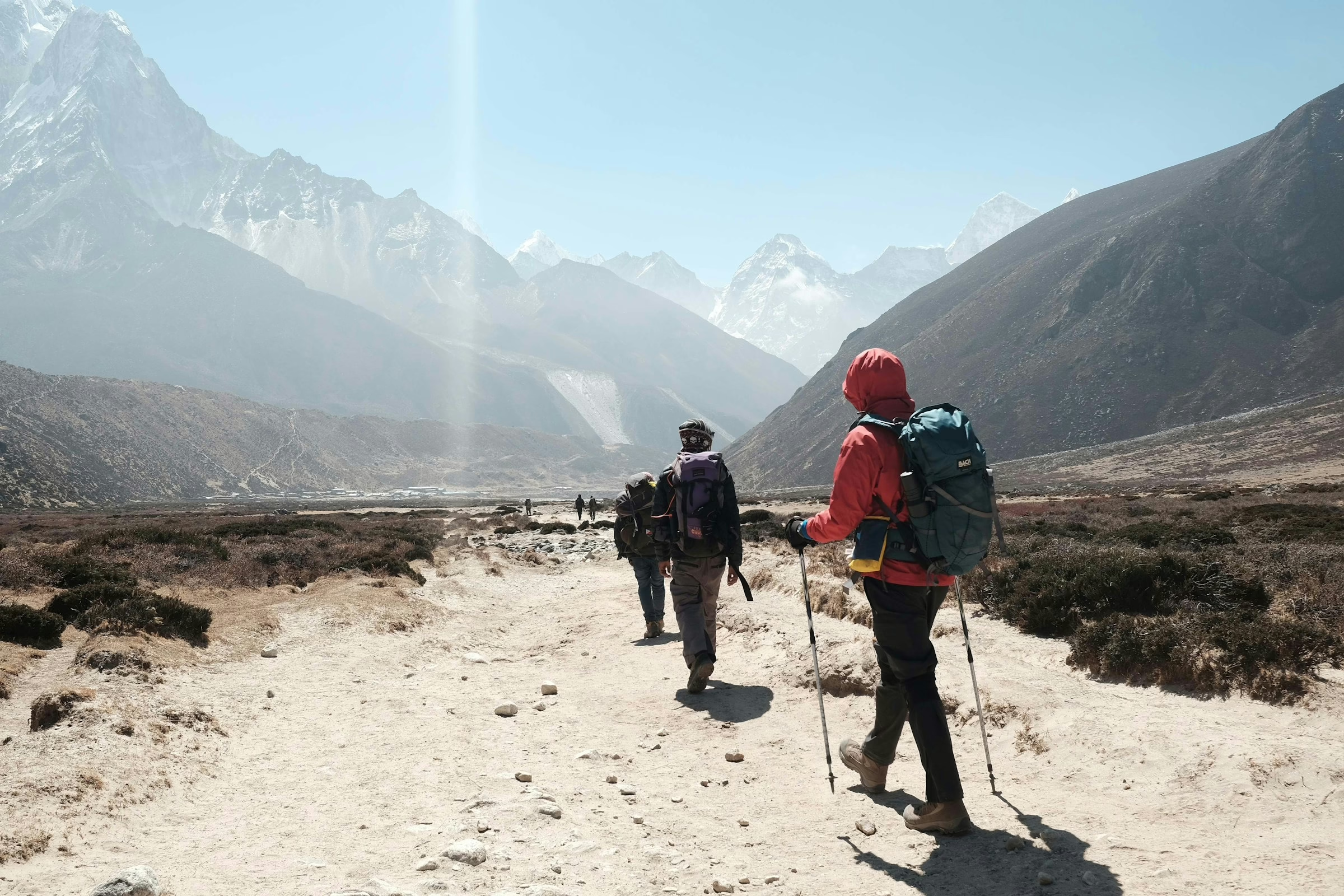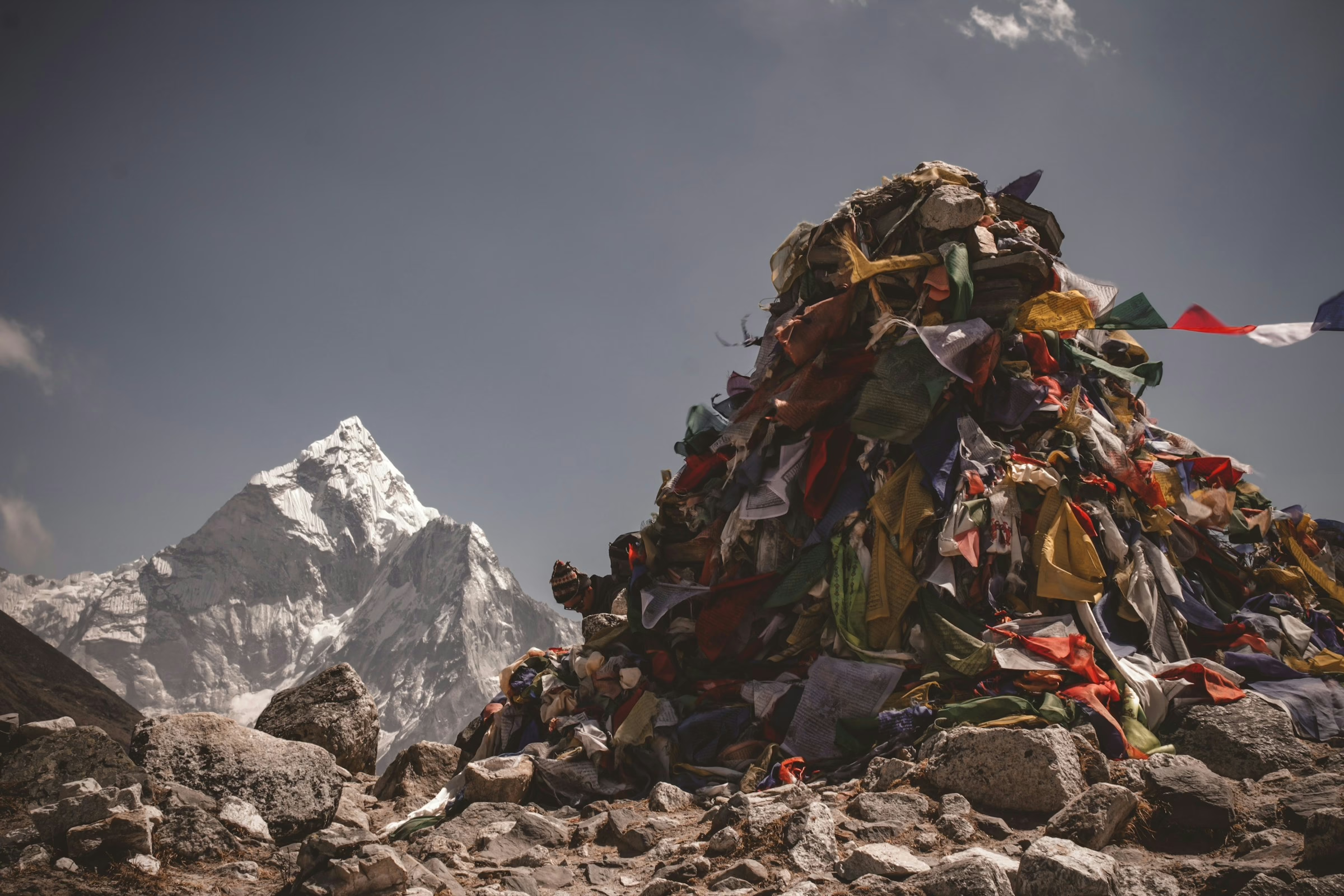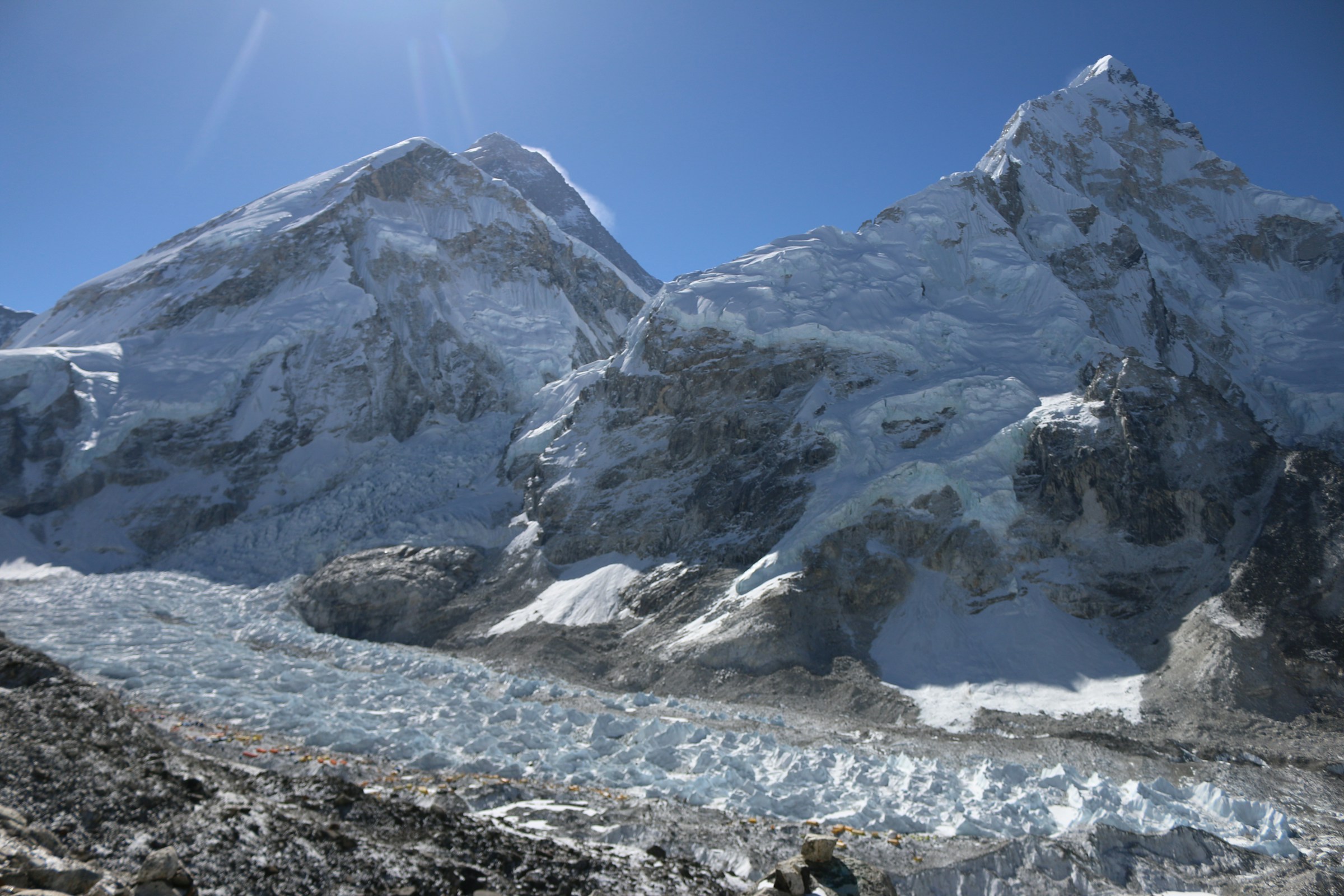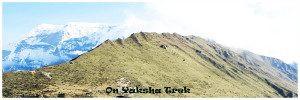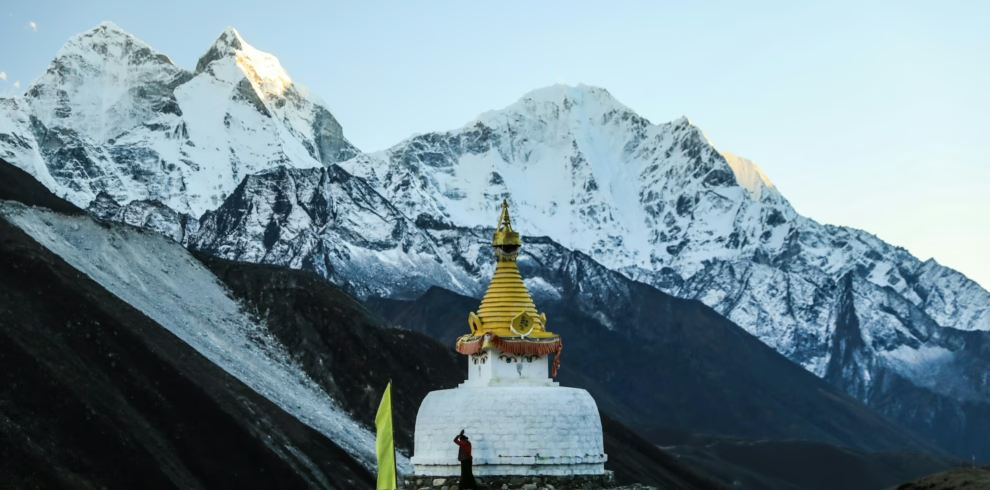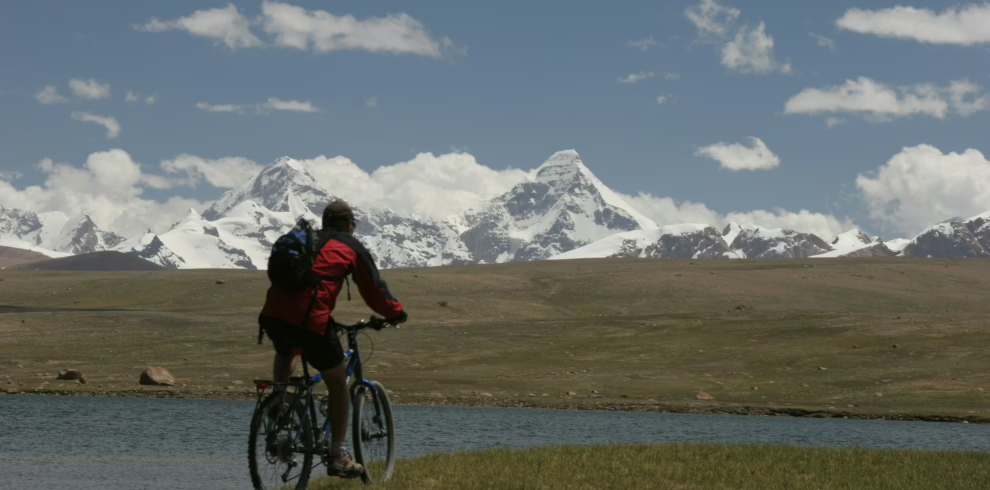Lukla Airport, known for its high-risk landing strip, is often considered one of the most dangerous airports in the world. If you’re looking to skip the flight to Lukla and still embark on the Everest Base Camp Trek, the Everest Base Camp Trip by Road package is the perfect choice. This scenic overland route from Kathmandu to Everest Base Camp takes you through a series of charming villages, including Salleri, Phaplu, Takshindu, Kharikhola, Bupsa, and finally Thamdanda—the last accessible stop by vehicle.
Opting for the Everest Base Camp Trek by Jeep not only makes your journey more comfortable but also helps you save money. As you travel from Kathmandu to Thamdanda, you’ll experience diverse landscapes, cultures, and lifestyles, offering a richer connection to the region. Unlike the quick flight to Lukla, this overland adventure can also help your body adjust better to higher altitudes, reducing the risk of altitude sickness. Along the way, you’ll be treated to breathtaking views of Mt. Everest, Mt. Cho Oyu, and other stunning peaks of the Solukhumbu Region—enhancing the experience and making this trek even more memorable.
16 days / 15 nights Everest Road trip
Conquer Trails in the Everest Region
Highlights
- Travel by private or shared jeep from Kathmandu to Thamdanda, and return the same route.
- The Everest Base Camp Trek by Road offers an alternative route to Everest Base Camp without a flight.
- Visit charming communities, showcasing Rai and Sherpa culture, including Salleri, Phaplu, Ringmo, Takshindo, Kharikhola, and Paiya.
- The Thamdanda route follows the classic Jiri Everest Base Camp trek trail.
- Experience authentic communities, farms, orchards, and mountain passes in the Solu region.
- Discover the inspiring lifestyles of the Khumbu region in towns like Lukla, Phakding, Monjo, Namche, Khunde, Khumjung, Thame, Tengboche, and Phortse.
- Enjoy stunning views of the Khumbu Icefall, glaciers, and the towering 8000-meter peaks of Mt. Everest, Lhotse, Nuptse, and Cho Oyu.
- Explore breathtaking valleys, slopes, springs, waterfalls, and vibrant rhododendron forests.
Itinerary
Upon your arrival at Tribhuvan International Airport, our representative will greet you and transfer you to your hotel in a private tourist vehicle. Once you're settled at the hotel, we will schedule a trip briefing at the hotel lobby or restaurant.
Your guide and porter will meet you at your accommodation around 5:00 AM, as outlined in the Everest Base Camp Trek without Lukla Flight itinerary. Together, you'll head to the Jeep station and begin your journey. After a five-hour drive along the BP Highway, you'll stop for lunch in the scenic town of Ghurmi. From there, the route becomes more picturesque, passing rivers, terraced fields, farmlands, and traditional villages. It takes about four hours to reach Phaplu via Salleri, followed by another three to four hours of off-road travel to Thamdanda, your destination for the day. You’ll spend the night at a tea house in Thamdanda.
Today’s road-based Everest Base Camp Trek begins in Thamdanda with a two-hour uphill hike to Paiya. The trail then descends through a rhododendron forest to Surke. After passing the ruins of a centuries-old Buddhist Chorten, you’ll follow the Dudhkoshi River to Chaurikharka, located below Lukla. A short walk brings you to Chheplung, where you join the main Everest Base Camp trail. Here, you’ll start to see more trekkers arriving from Lukla by air. After a relaxed two-hour walk through villages, forests, and over several long suspension bridges, you’ll arrive in Phakding, a Sherpa village. Overnight stay at a tea house in Phakding.
After breakfast in Phakding, begin your trek along the riverbank toward Namche Bazaar. In about three hours, you’ll pass through the village of Tok Tok and reach Manjo, the entrance to Sagarmatha National Park, where your permits will be checked. From there, cross a suspension bridge and descend to the Dudhkoshi River, entering Jorsalle. You’ll continue along the river, crossing several suspension bridges—the last being the famous Tenzing Hillary Bridge.
From here, it's a steady 2–3 hour uphill hike through forest to Namche Bazaar. Along the way, you may catch your first glimpse of Mount Everest from a scenic viewpoint. Spend the afternoon exploring Namche, the heart of Sherpa culture, and enjoy the sunset from the National Park Viewpoint. Overnight at a tea house in Namche Bazaar, surrounded by stunning Himalayan views.
Namche Bazaar is an ideal place to acclimatize during the 16-day Everest Base Camp Trek without a Lukla flight. As the main hub of the Khumbu Region, it offers various amenities, including government offices, internet cafés, ATMs, restaurants, and shops.
Health experts recommend staying active on rest days, so instead of remaining idle, you can hike to nearby areas like Thamo, Khunde, or Khumjung village via the Everest View Hotel in Syangboche. Our guide will also take you to the Sagarmatha National Park Visitor Center, where you can learn about Sherpa culture, the first Everest climbers, and the region’s unique flora and fauna.
On day six of the Everest Base Camp Trek via road, you'll trek to Tengboche, enjoying stunning views of Everest, Lhotse, Ama Dablam, and Thamserku. After 3–4 hours of walking and crossing the Dudh Koshi River, the trail descends through alpine forest to Phungi Tenga. Along the way, you'll pass two trail junctions—one from Gokyo Lake and another from Khumjung.
As the path climbs through the forest, keep an eye out for Himalayan Thar and Monals. Eventually, you'll reach Tengboche Monastery, a scenic hilltop with panoramic views of Ama Dablam, Everest, Lhotse, and more. You'll spend the night in this tranquil monastery village, with mountain views right from your window.
The EBC Trek without a Lukla flight descends from Tengboche through forested trails to Deboche, where you may spot endangered species like musk deer and the national bird, Daphne. You’ll then pass the small village of Milingo and cross the double-decked bridge over the Imja Khola.
As the trail climbs toward an ancient Buddhist Chorten, you’ll enter Pangboche through a traditional gateway with a close-up view of Ama Dablam. From there, it’s a steady three-hour walk along shrub-covered terrain to the scenic village of Somare. Another two to three hours of trekking brings you to Dingboche, with beautiful views throughout the journey.
Due to the increased risk of altitude sickness at this elevation, it’s important to check your oxygen level using the oximeter provided by your guide before continuing.
This second rest day, as outlined in the Everest Base Camp Trek by Jeep itinerary, is for acclimatization. After breakfast, you can hike up the hill north of the village for stunning views of Ama Dablam, Lhotse, and Nuptse along the trail to Island Peak. This short ascent makes for a relaxed afternoon trek.
Alternatively, you can hike to Chhukung Ri for panoramic views of Island Peak, Ama Dablam, Makalu, Tawoche, and more. Another option is Nagarjuna, offering sweeping vistas of the Chhukung Valley and surrounding peaks like Kangtega, Taboche, and Lobuche East.
Today's trek from Dingboche to Lobuche takes about five to six hours, passing above the village of Pheriche. The trail climbs past meadows and a few abandoned buildings before reaching Thokla, a scenic village at the edge of the Khumbu Glacier, after approximately three hours of walking with stunning mountain views.
From Thokla, a steep 45-minute ascent leads to Thokla Pass, where you'll see memorials honoring climbers who lost their lives on Everest. A short 20-minute walk brings you to the Italian Pyramid Hotel. From there, continue for about two more hours along the glacier to reach Lobuche, where you’ll stay overnight.
Today is the highlight of your Everest Base Camp Trek by Road, as you’ll finally reach Everest Base Camp. The day begins with a three-hour hike from Lobuche across the Khumbu Glacier to Gorakshep. After checking into your guesthouse and dropping off your belongings, you’ll continue with a 2–3 hour trek to Everest Base Camp.
Be sure to carry enough water, wear warm clothing, bring a flashlight, and pack essential gear. During spring, the Base Camp is busy with expedition groups. While you can't see Mount Everest directly from the camp, the views of surrounding peaks and the Khumbu Icefall are truly spectacular.
After exploring, return to Gorakshep for the night.
Early this morning, your EBC Trek without the dangerous flight will take you to Kala Patthar for a breathtaking sunrise view of Mount Everest (8,848.86m), Pumari (7,145m), Lingtren (6,695m), Khumbutse (6,623m), Changtse (7,550m), and Nuptse (7,879m). The ascent to Kala Patthar is challenging, requiring about two hours of hard climbing. Once at the summit, you’ll enjoy one of the best views of Mount Everest. After spending some time there, return to Gorakshep for breakfast before descending to Pheriche, a 4–5 hour journey, where you’ll overnight.
After breakfast, your road-based Everest Base Camp trek will begin with a descent from Pheriche to Namche Bazaar. The 7–8 hour journey will allow you to retrace your steps and enjoy familiar sights. Along the way, you'll pass streams, dense forests, wildlife, and breathtaking scenery. After about four hours, you’ll stop for lunch at Phungi Thanga, then continue for another three hours to Namche Bazaar, where you’ll spend the night at a teahouse.
The trek from Namche Bazaar to Chaurikharka will take 6 to 7 hours. This long journey primarily descends alongside the Dudhkoshi River, passing through tropical forests and Sherpa villages. On the return, you'll see familiar landscapes and mountain views from a different perspective. You'll pass through picturesque towns like Larja Dobjan, Monjo, Bengkar, Ghat, and Chheplung before reaching Chaurikharka. After settling into the teahouse, you can take a 20-minute trip to Lukla to visit the world’s most dangerous airport, if you're interested.
Today marks your final day of hiking according to the Everest Base Camp Trek by Road schedule. After breakfast in Chaurikharka, you'll trek to Surke, which takes about 45 minutes to an hour. From there, you'll ascend through the forest to Paiya (Chutok), then descend to Thamdanda for the next hour. The trail continues relatively flat to Khari La. After reaching the tea house in Thamdanda, our guide will finalize the jeep journey to Kathmandu for tomorrow. In the evening, enjoy a celebratory dinner with the crew to mark the completion of your trek.
Today, you'll depart early and take a four-wheel-drive jeep to Kathmandu. The journey from Thamdanda to Salleri, passing through Kahrikhola, Jubing, and Andheri, is challenging and takes 4 to 5 hours. From Salleri, you'll switch to another jeep for the 8 to 9-hour drive to Kathmandu. Enjoy the scenic views along the way. Arrive in Kathmandu in the evening and spend the night before heading to your next destination.
Today, you’ll depart Kathmandu and continue your journey to your next destination. We’ll drop you off at the airport three hours before your flight. Thank you for joining us—we hope you had a memorable experience and wish you a safe trip ahead.
Includes/Excludes
Cost Includes
- Pickup and drop-off service at the international airport.
- Necessary paperwork and trekking permits for Sagarmatha National Park and Pasang Lhamu Rural Municipality.
- Jeep transportation from Kathmandu to Thamdanda and back.
- Trekking equipment (if needed).
- Green Lotus Trekking duffle bag and T-shirt as souvenirs.
- Three meals per day (breakfast, lunch, dinner) during the trek.
- Twin-share accommodation with shared toilets during the trek.
- All expenses for an English-speaking, licensed guide, including food, accommodation, transportation, salary, and equipment.
- Guide insurance.
- Everest Base Camp trekking map (for group).
- First aid kit for the trek.
- Tourist service charges, VAT, government taxes, and any necessary official expenses.
Cost Excludes
- International airfare, visa, and travel insurance.
- Lunch and dinner in Kathmandu.
- Extra nights in Kathmandu or on the trek (due to early arrival, delays, or other reasons).
- Porter service for luggage (optional, at USD 300 for the whole trip).
- Tips for the guide and porter (recommended).
FAQs
Yes, most lodges offer vegetarian meals. We recommend sticking to vegetarian food to avoid food poisoning, especially since heavy, meat-based meals aren’t ideal at high altitudes.
Credit cards are rarely accepted during the trek. In Kathmandu, ATMs are available and provide a good exchange rate. However, they usually charge a $5 USD fee and limit withdrawals to NPR 25,000 per day (about $215 USD), plus any fees from your bank.
There is no minimum group size. We can organize the trek for individuals or large groups. Ideally, four people can share the cost of the Jeep from Kathmandu to the trek’s starting point and back.
Your safety is our priority. Our guides are trained in first aid and equipped with essential gear and supplies, including oximeters to monitor altitude sickness. In emergencies, helicopter evacuation is available.
Yes, you’ll need the Sagarmatha National Park Permit and the Khumbu Pasang Lhamu Rural Municipality Permit. We handle all permit arrangements on your behalf.
Yes, comprehensive travel insurance is mandatory. It must cover medical emergencies and helicopter evacuation up to 6,000 meters. A copy of your insurance certificate must be submitted before the trek.
There’s no strict age limit, but we don’t recommend this trek for young children due to the altitude. Participants should be in good physical health and not have serious conditions like heart or lung issues.
Keep your pack under 15 kg. Each porter carries up to 30 kg (shared between two trekkers). For the Lukla flight (if applicable), the baggage allowance is 15 kg total—including hand luggage—with extra charges for excess weight.
Yes, most tea houses offer Wi-Fi for a small fee. Speeds may be slow, but it’s enough for basic communication or urgent messages.
Bottled water is widely available, though some areas restrict plastic bottles. We recommend carrying a refillable water bottle and using boiled, filtered, or purified water. Bring purification tablets or drops, which are also available in Kathmandu.
The 16-day Everest Base Camp Trek by Road begins in Kathmandu, passing through a diverse and breathtaking landscape. The main trek starts in Thamdanda, heading to Surke via Paiya, and then continues through Lukla, Chheplung, and Nurning on the way to Phakding. From there, you’ll pass Monjo, Jorsale, and Larja Dobhan before reaching Namche Bazaar, the gateway to Everest. From Namche, a hike to Tengboche will bring you to the oldest Tengboche Monastery.
Your journey continues past the scenic villages of Pangboche and Shomare, following the Imja Khola, to Dingboche. From Dingboche, you’ll trek through Dusa, Thokla, and Lobuche on your way to Gorakshep. After reaching Everest Base Camp and Kala Patthar, you’ll descend to Pheriche before making your way back to Namche, Chaurikharka, and finally Thamdanda. The trek ends with a jeep ride from Thamdanda back to Kathmandu.
Green Lotus Trekking, a reputable trekking agency, offers this carefully planned itinerary, complete with an experienced guide. Experience stunning mountain views, a new hiking trail, and rich cultural traditions along the way. Book now for the 2025 and 2026 seasons at an unbeatable price, supporting Nepal’s tourism industry.
What to Expect from the Everest Base Camp Trek by Road Package?
As you travel from Kathmandu to Thamdanda, you’ll experience stunning scenery, including the Sunkoshi River, Seti Devi Temple, rhododendron forests, and charming towns like Salleri, Phaplu, Taksindu, Kharikhola, and Bupsa.
On the trek, you’ll enjoy mountain views of Everest, Amadablam, and Cho Oyu. The route will take you through rhododendron and juniper forests and along the beautiful Dudhkoshi River. In the Khumbu region, home to the Sherpa people, you’ll gain insight into their culture and hospitality, with a visit to the Sherpa Museum in Namche.
The trek includes a mix of sloping paths, flat stretches, and winding trails. A stone-lined path alongside the Khumbu glacier will lead you to Everest Base Camp. This trek is accessible to those with average fitness, as the terrain is not overly difficult.
You’ll stay in basic local teahouses along the way, with simple bedding and blankets provided. After Namche Bazar, amenities like running water and hot showers may not be available every night, and public restrooms will be used for a few nights. It’s advisable to bring your own toiletries. Mineral water is available throughout the journey, and teahouses offer meals such as bread, rice, soup, noodles, vegetables, and pasta.
Your guide will carry a basic first aid kit, but it’s essential to bring any personal medications. In case of an emergency, you’ll be transported to Kathmandu, with helicopter evacuation covered by your travel insurance.
Given the high altitude, be cautious of AMS (Acute Mountain Sickness). If you experience symptoms like nausea, vomiting, or shortness of breath, follow your guide’s instructions and listen to your body.
Is the Everest Base Camp Trek by Road Right for You?
The Everest Base Camp Trek by Road is perfect for those who want to experience the stunning landscapes, mountains, waterfalls, and dense vegetation of the Khumbu region without flying to Lukla. While the trek is challenging, those who are physically prepared can successfully complete it with proper planning.
The trek will be rewarding and unforgettable, especially if you’re in good health and have no severe respiratory or heart conditions. While younger trekkers may need less preparation, older individuals with good stamina and a strong training regimen can also enjoy this trek.
How to Prepare for the Everest Base Camp Trek without Lukla Flight?
Preparing for this trek requires both physical and mental strength. The demanding steep ascents and long hours of hiking in the Khumbu region require perseverance. A strong mental attitude is crucial, as the challenging terrain can lead to frustration if you’re not mentally prepared.
To prepare, start training several months in advance. You’ll be hiking 5-6 hours a day, carrying a backpack weighing 6-12 kg. Focus on building your strength and endurance through regular exercise—aim for 5-6 days of training per week, including hill climbs. Hill training is vital to help your body cope with higher altitudes, where oxygen levels are lower. Combine cardiovascular exercises like jogging and swimming with strength training to improve your fitness.
Age should not deter you from the trek. There is no age limit for this adventure, as long as you’re physically able to walk for extended periods. It’s worth noting that people as young as 13 and as old as 76 have successfully completed the Everest Base Camp trek.
With proper preparation, the Everest Base Camp Trek by road will be an incredible and fulfilling adventure!
Useful Information for Everest Base Camp Trek by Road
Best Time for the Everest Base Camp Trek by Road
- Spring (March-May): Spring offers ideal trekking conditions with stable weather and no sudden downpours. It’s an excellent time to enjoy clear views and observe wildlife emerging from hibernation. The lush forests and vibrant flowers add to the scenic beauty.
- Autumn (September-November): Autumn is another great season, with fewer weather-related disruptions like landslides or avalanches. Enjoy clear skies and stunning views of snow-capped peaks. It’s also a cultural season, with festivals offering insights into local traditions along the trekking route.
Food and Meal Availability During the Trek
- Breakfast & Lunch: Common meals include pancakes, cornflakes, bread, chapatti, porridge, eggs (fried, scrambled, boiled, omelets), toast, muesli, and hash browns.
- Dinner: Similar to lunch, with added soups such as tomato, mushroom, garlic, vegetable, or chicken soup.
- Drinks: Options include black tea, milk tea, lemon tea, ginger tea, mint tea, coffee (milk or black), and more.
Accommodation During the Trek
- In Kathmandu, you’ll stay in a shared room at a 3-star hotel. If traveling with a group, rooms are assigned by gender. Single supplements are available for an extra charge.
- Along the trek, you’ll stay in tea houses, which offer basic accommodations, with twin beds, blankets, and shared bathrooms. Hot showers are available for an additional cost.
Travel Insurance
- Travel insurance is mandatory for the Everest Base Camp Trek without the Lukla flight. It must cover medical emergencies and evacuation up to 6000 meters. Please provide a copy of your insurance before departure, and ensure it covers helicopter rescue if necessary.
Altitude Sickness and Remedies
- Altitude sickness is common above 3000 meters. Symptoms include headaches, nausea, dizziness, and shortness of breath. To prevent it, stay hydrated, avoid alcohol, and take things slowly. Diamox is recommended, and acclimatization is crucial.
Difficulty Level
- The trek can be challenging, especially if you’re not accustomed to hiking in steep terrain. Expect 5-6 hours of hiking each day over rocky paths, valleys, and difficult landscapes. Physical preparation is essential, and altitude sickness is a risk, especially at elevations above 4000 meters.
Packing Essentials
- Clothing: Sunglasses, sun hat, gloves, woolen cap, waterproof jacket, trekking pants, down jacket, fleece, thermal clothing, and socks.
- Gear: Rucksack (30L), headlamp, power bank, water bottles, sleeping bag liner, trekking poles.
- Personal items: Toiletries, flip-flops, sun protection cream, wet wipes, hand sanitizer, and water purification tablets.
Safety Measures
- Green Lotus Trekking prioritizes safety with experienced guides trained in wilderness first aid. We ensure proper medical care, evaluate accommodations and meals, and have the right gear for emergencies.
- Our trek leaders have the authority to adjust the trek or stop if someone is unwell due to altitude sickness.
Booking Procedure
- To reserve your spot, pay a 10% deposit of the total trip cost. This guarantees your booking for accommodation, guides, permits, and transportation. The balance can be paid upon arrival by cash or credit card. Please also submit your passport copy and travel insurance at the time of booking.

